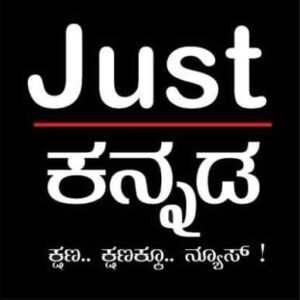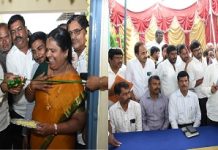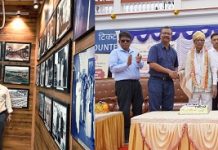ಬೆಂಗಳೂರು : ನನ್ನ ಸುತ್ತಮುತ್ತಲೂ ಅನ್ಯಾಯವಾಗಿ ಸಂಭವಿಸುತ್ತಿರುವ ಸಾವುಗಳನ್ನು ನೋಡುತ್ತಿದ್ದರೂ ನಾನೇನೂ ಹತಾಶೆಗೊಂಡಿಲ್ಲ ಮತ್ತು ಖಿನ್ನತೆಗೆ ಒಳಗಾಗಿಲ್ಲ. ಬಹಳ ತಿಂಗಳುಗಳಿಂದ ಕಿರಿಯರು ಮತ್ತು ಹಿರಿಯರು ಎಂಬ ಭೇದ ತೋರದ ಭಯಾನಕ ಸಾವಿನ ಬಗ್ಗೆ ಕೇಳಲು ಅಥವಾ ತಿಳಿದುಕೊಳ್ಳಲು ನಾನು ಇಷ್ಟಪಡುತ್ತಿರಲಿಲ್ಲ. ಆದರೆ, ಒಂದು ಸಲ, ನನಗೆ ಅನಿಸಿತು, ಹೀಗೆ ನಾನು ಎಷ್ಟು ದಿನ ಈ ವಾಸ್ತವದಿಂದ ದೂರ ಓಡಿಹೋಗಬಲ್ಲೆ? ನಮ್ಮೆದುರಿಗೆ ಇರುವ ಕೋವಿಡ್ ಡ್ಯಾಶ್ ಬೋರ್ಡ್ ಸತ್ಯ ಏನೆಂಬುದನ್ನು ಹೇಳುತ್ತಿದೆ. ಅದು ಎಷ್ಟು ಜನ ಸೋಂಕಿಗೆ ಒಳಗಾಗಿದ್ದಾರೆ, ಗುಣಹೊಂದಿದವರೆಷ್ಟು ಮತ್ತು ಮರಣಹೊಂದಿದವರೆಷ್ಟು ಎಂಬುದರ ಲೆಕ್ಕವಿಡುತ್ತದೆ. ಕೊನೆಗೂ ನನ್ನಲ್ಲಿರುವ ಪತ್ರಕರ್ತೆ ವಾಸ್ತವವೇನು ಎಂಬುದನ್ನು ತಿಳಿದುಕೊಳ್ಳಲು ಒಂದು ಆಸ್ಪತ್ರೆಯನ್ನಾದರೂ ನೋಡೋಣವೆಂದು ಬಯಸಿ ಸಾವಿನ ಕೂಪವಾಗಿರುವ ಬೆಂಗಳೂರಿನ ಆಸ್ಪತ್ರೆಯೊಂದಕ್ಕೆ ಭೇಟಿ ಕೊಡುತ್ತಾಳೆ.
ನಾನು ಕಳೆದ ವರ್ಷದಿಂದ ಕೋವಿಡ್ ಕರ್ತವ್ಯದಲ್ಲಿರುವ ಔಷಧಶಾಸ್ತ್ರದ ಪ್ರಾಧ್ಯಾಪಕರಾದ ಡಾ. ವಿಷ್ಣು ಹಯಗ್ರೀವ ಅವರನ್ನು ಸಂಪರ್ಕಿಸಿದೆ. ಪರಿಸ್ಥಿತಿ ಎಷ್ಟು ಗಂಭೀರವಾಗಿದೆ ಎಂಬುದನ್ನು ನಾನು ತಿಳಿಯುವ ಅಗತ್ಯವಿತ್ತು. “ಹೌದು, ಜನರು ಕಾಯಿಲೆ ಬೀಳುತ್ತಿದ್ದಾರೆ ,ಗುಣಹೊಂದುತ್ತಿದ್ದಾರೆ, ಮತ್ತೆ ಕೆಲವರು ಸಾಯುತ್ತಿದ್ದಾರೆ ಕೂಡ,” ಆ ಡಾಕ್ಟರ್ ಏನೂ ಮುಚ್ಚುಮರೆ ಮಾಡದೇ ಹೇಳಿದರು. ಹೀಗೆಲ್ಲಾ ನಡೆಯುವಂತಹದೇ. ಏನೇ ಆಗಲಿ, ಆತಂಕಕ್ಕೆ ಒಳಗಾಗುವುದು ಬೇಡ, ಎಂದು ಆ ಡಾಕ್ಟರ್ ಭರವಸೆ ನೀಡಿದರು.

ಮುಂದಿನ ಪ್ರಶ್ನೆ ಅವರು ಈ ಅಧಿಕ ಕೆಲಸದ ಒತ್ತಡವನ್ನು ಹೇಗೆ ನಿಭಾಯಿಸಿದರು ಎಂದಾಗಿತ್ತು. “ನಾನು ಪ್ರತೀದಿನ 80ಕ್ಕೆ ಕಡಿಮೆ ಇಲ್ಲದಂತೆ ರೋಗಿಗಳನ್ನು ನೋಡುತ್ತೇನೆ. ನೀವು ನಾಳೆ ನಮ್ಮ ಅಸ್ಪತ್ರೆಗೆ ಬನ್ನಿ, ಅಲ್ಲಿ ನೋಡುವಿರಂತೆ.” ಅವರು ಹೇಳಿದರು. ಏಪ್ರಿಲ್ 27 ರಂದು ನಾನು ಮತ್ತು ಸಮೂಹ ಮಾಧ್ಯಮದವರಾದ ಕಿರಣ್ ಹೆಬ್ಬಾಳೆ, ಬೆಂಗಳೂರಿನ ಕಾಡುಗೊಂಡನಹಳ್ಳಿಯಲ್ಲಿರುವ ಡಾ.ಬಿ.ಆರ್.ಅಂಬೇಡ್ಕರ್ ಕಾಲೇಜಿನಲ್ಲಿರುವ ಕೋವಿಡ್ ಕಟ್ಟಡದಲ್ಲಿದ್ದೆವು. ನಾನು ಸಂಜೆ 4 ಗಂಟೆ ಹೊತ್ತಿಗೆ ನನ್ನ ಕಾರನ್ನು ಆ ಕಟ್ಟಡದ ಹತ್ತಿರವೇ ನಿಲ್ಲಿಸಬೇಕಾಯಿತು. ನಾನು ಮತ್ತು ಕಿರಣ್ ನಾಲ್ಕು ಪದರಗಳ ಮಾಸ್ಕ್ ಧರಿಸಿದ್ದೆವು. ನಮ್ಮ ಕೈಗಳನ್ನು ಆಗಾಗ್ಗೆ ಸ್ಯಾನಿಟೈಸರ್ ಬಳಸಿ ಸ್ವಚ್ಛಗೊಳಿಸಿಕೊಳ್ಳುತ್ತಿದ್ದೆವು.
ಒಬ್ಬ ಚಿಕ್ಕವಯಸ್ಸಿನ ಮಹಿಳೆ ಬಿಕ್ಕಿ ಬಿಕ್ಕಿ ಅಳುತ್ತಿರುವುದನ್ನು ಗಮನಿಸಿದೆವು. ಅವಳ ಕ್ಷೀಣ ಧ್ವನಿ ಕೆಲವು ಸೆಕೆಂಡುಗಳಷ್ಟೇ ಕೇಳಿಸುತ್ತಿತ್ತು, ನಂತರ ಆ ಧ್ವನಿಯೂ ಉಡುಗಿಹೋಯಿತು. ಅವಳಿಗೆ ಬಹುಶಃ ತನ್ನ ಗಂಡನ ಅಕಾಲಿಕ ಮರಣದಿಂದಾಗಿ ಅಳುವುದಕ್ಕೂ ಶಕ್ತಿ ಉಳಿದಿರಲಿಲ್ಲ. ಅವಳು ಯಾವಾಗಲೂ ತನ್ನ ಮಾಸ್ಕನ್ನು ಸರಿಪಡಿಸಿಕೊಳ್ಳುತ್ತಿದ್ದಳು. ಅಂತಹ ವಿಷಮಸ್ಥಿತಿಯಲ್ಲೂ ಅವಳು ಸಾಕಷ್ಟು ಜಾಗ್ರತೆ ವಹಿಸುತ್ತಿದ್ದಳು. ಫೇಸ್ ಶೀಲ್ಡ್ ಧರಿಸಿದ ಮಹಿಳೆಯೊಬ್ಬಳು ದುಃಖಿತ ಹೆಂಗಸನ್ನು ಸಮಾಧಾನ ಪಡಿಸಲು ಪ್ರಯತ್ನಿಸುತ್ತಿದ್ದಳು. ಅಂಬುಲೆನ್ಸ್ ಮತ್ತು ಶವ ಸಾಗಿಸುವ ವಾಹನಗಳು ಸಾಲಾಗಿ ನಿಂತಿದ್ದವು. ನಾನೇನು ಈವರೆಗೆ ಸಾವನ್ನು ನೋಡಿರಲೇ ಇಲ್ಲವೆಂದಲ್ಲ. ಒಬ್ಬ ವರದಿಗಾರಳಾಗಿ ನಾನು ಅಪಘಾತಗಳನ್ನು, ದೊಂಬಿಗಳನ್ನು, ಮತ್ತು ಮೃತ ದೇಹಗಳನ್ನೂ ನೋಡಿದ್ದೇನೆ. ಸುದ್ದಿಮಾಧ್ಯಮದಲ್ಲಿ ಕೆಲಸಮಾಡಿರುವುದು, ನನಗೆ, ಸಾವಿನ ಸಂಖ್ಯೆಯನ್ನು ಅಳತೆಗೋಲಾಗಿಟ್ಟುಕೊಂಡು ಮಾನವ ದುರಂತದ ತೀವ್ರತೆಯನ್ನು ಅಂದಾಜು ಮಾಡುವುದೂ ಸೇರಿದಂತೆ ಹಲವಾರು ವಿಷಯಗಳನ್ನು ಕಲಿಸಿದೆ. ಆದರೆ ಈ ಸಾಂಕ್ರಾಮಿಕ ಪಿಡುಗಿನ ಪರಿಸ್ಥಿತಿಯೇ ವಿಶಿಷ್ಟವಾದುದು. ಪ್ರತಿಯೊಬ್ಬರ ಸುರಕ್ಷಿತತೆಯ ಪ್ರಶ್ನೆ ಇಲ್ಲಿ ಮುಖ್ಯವಾಗುತ್ತದೆ.
ಡಾ. ವಿಷ್ಣು ಸುಮಾರು 4.45ರ ಹೊತ್ತಿಗೆ ಬಂದರು. ಆ ಆವರಣದಲ್ಲಿ ಸೇರಿದ್ದ ರೋಗಿಗಳನ್ನು ನೋಡಿಕೊಳ್ಳುತ್ತಿರುವವರ ಹತ್ತಿರ ಹೋಗಿ ಅವರೊಂದಿಗೆ ಮಾತನಾಡಲಾರಂಬಿಸಿದರು. ಅವರು ಪ್ಯಾರಾಮೆಡಿಕಲ್ ಸಿಬ್ಬಂದಿಗೆ ಸೂಚನೆಗಳನ್ನು ಕೊಟ್ಟರು. ಅವರೆಲ್ಲರೂ ತಲೆಯಿಂದ ಪಾದದ ವರೆಗೂ ಪ್ಲ್ಯಾಸ್ಟಿಕ್ ಶೀಟಿನಲ್ಲಿದ್ದರು. ಅವರೆಲ್ಲಾ ಒಂದೇ ಸಮನೆ ಬೆವರುತ್ತಿರಬಹುದು. ಡಾಕ್ಟರ್ ಮಾಮೂಲಿನಂತೆ ಪ್ಯಾಂಟ್, ಅರ್ಧತೋಳಿನ ಷರ್ಟು, ಮತ್ತು ಅದರ ಜೊತೆ, ನೀಲಿ ಬಣ್ಣದ ಸರ್ಜಿಕಲ್ ಮಾಸ್ಕ್ ಧರಿಸಿದ್ದರು. ಅವರ ಹಣೆಯಲ್ಲಿ ಕಪ್ಪು ತಿಲಕ ಇನ್ನೂ ಕಾಣುತ್ತಿತ್ತು. ಅವರು ಹೇಳಿದರು,

ನಾನೇನಾದರೂ ಕೋವಿಡ್ ರೋಗಿಯೊಬ್ಬರ ಜೊತೆ ಮಾತಾಡಬೇಕೆಂದಿದ್ದರೆ, ಪಿಪಿಇ ಉಡುಪು ಧರಿಸಬೇಕು ಅಂತ. ಹಾಗಿಲ್ಲದಿದ್ದರೆ, ಮುಖದ ಮಾಸ್ಕ್ ಆದರೂ ಸಾಕು ಎಂದರು. ನನಗೇನೂ ರೋಗಿಗಳ ಬಳಿ ಹೋಗುವ ಉದ್ದೇಶ ಹಾಗೂ ಧೈರ್ಯವಿರಲಿಲ್ಲ. ನಾನು ಮತ್ತು ಕಿರಣ್ ವಾರ್ಡುಗಳಿಗೆ ಅವರು ಹೋಗುತ್ತಿದ್ದಂತೆ ಅವರನ್ನು ಹಿಂಬಾಲಿಸಿದೆವು. ಅವರು ರೋಗಿಗಳ ಖಾಸಗಿತನ ಕಾಪಾಡುವುದು ಬಹಳ ಮುಖ್ಯ ಎಂದು ಹೇಳುವುದನ್ನು ಮರೆಯಲಿಲ್ಲ. ಅವರ ಅನುಮತಿಯಿಲ್ಲದೆ ಫೊಟೋ ತೆಗೆಯುವುದಾಗಲೀ, ವಿಡಿಯೋ ಮಾಡುವುದಾಗಲೀ ಮಾಡಬಾರದು ಎಂದರು.
ಕೋವಿಡ್ ಕಟ್ಟಡ ಪ್ರವೇಶಿಸುವಾಗ ನನ್ನ ಸುರಕ್ಷತೆಯ ಬಗ್ಗೆ ನನಗೆ ಕಾಳಜಿ ಇಲ್ಲವೆಂದು ಹೇಳಿದರೆ ಅದು ತೋರುಗಾಣಿಕೆಯಾಗುತ್ತದೆ. ನಾನು ರೋಗ ಪ್ರತಿರೋಧಕಗಳನ್ನು ತೆಗೆದುಕೊಂಡಿದ್ದರೂ, ನನ್ನನ್ನು ಅಪಾಯಕ್ಕೆ ಒಡ್ಡಿಕೊಳ್ಳುತ್ತಿದ್ದೇನೆಂಬುದು ನನಗೆ ತಿಳಿದಿತ್ತು. ನನಗೆ ಧೈರ್ಯ ಕೊಟ್ಟಿದ್ದು ಮಾತ್ರ ಈ ಅತ್ಯುತ್ಸಾಹದ, ಅನುಭವೀ ಡಾಕ್ಟರ್.
ಆ ಡಾಕ್ಟರ್ ಮುಂದೆ ಹೋಗುತ್ತಿದ್ದಂತೆ ಅವರಿಗೇನೋ ಗದ್ದಲ ಕೇಳಿಸಿತು. ರೋಗಿಯನ್ನು ನೋಡಿಕೊಳ್ಳುತ್ತಿರುವವರೊಬ್ಬರು ಏರುಧ್ವನಿಯಲ್ಲಿ ಆಮ್ಲಜನಕದ ಸೌಲಭ್ಯ ಒದಗಿಸಲು ಕೇಳುತ್ತಿದ್ದರು. ಪುರುಷ ನರ್ಸ್ ಒಬ್ಬರಿಂದ ಈ ಬಗ್ಗೆ ಮಾಹಿತಿ ಪಡೆದುಕೊಂಡ ಆ ಡಾಕ್ಟರ್ ಆಮ್ಲಜನಕ ಲಭ್ಯವಿಲ್ಲವೆಂದು ಆ ರೋಗಿಯ ಉಪಚಾರಕರಿಗೆ ಹೇಳಿದರು. ಅವರು ಮತ್ತೂ ವಾದಿಸುವುದು, ಕಿರುಚಾಡುವುದು, ಕೂಗುವುದು ಮಾಡುತ್ತಲೇ ಇದ್ದರು. ಆ ಡಾಕ್ಟರ್ ಪುನಃ, ಪುನಃ ಆಮ್ಲಜನಕದ ಕೊರತೆ ಬಗ್ಗೆ ವಿವರಿಸಿ, ಅವರ ಸಿಬ್ಬಂದಿಗೆ ಈ ವಿಷಯವನ್ನು ಪೋಲೀಸರ ಗಮನಕ್ಕೆ ತರಲು ಸೂಚಿಸಿ, ಅಲ್ಲಿಂದ ಹೊರಟರು. ಆಮೇಲೆ, ಅವರನ್ನು ತಹಬಂದಿಗೆ ತರುತ್ತಿದ್ದ ಒಬ್ಬ ಯುವ ಭದ್ರತಾ ಸಿಬ್ಬಂದಿಯ ಮೇಲೆ ರೋಗಿಯ ಉಪಚಾರಕರು ಹಲ್ಲೆ ಮಾಡಿದರು.
ಆ ಡಾಕ್ಟರ್ ಒಂದು ಕೊಠಡಿಯಿಂದ ಇನ್ನೊಂದು ಕೊಠಡಿಗೆ, ಒಂದು ಹಾಸಿಗೆಯಿಂದ ಇನ್ನೊಂದು ಹಾಸಿಗೆಗೆ ತ್ವರಿತವಾಗಿ ಹೋಗುತ್ತಿದ್ದರು. ಅವರೊಂದಿಗೆ ಹೆಜ್ಜೆ ಹಾಕಲು ನನಗೆ ಕಷ್ಟಸಾಧ್ಯವಾಗುತ್ತಿತ್ತು. ಅವರು ಪ್ರತಿಯೊಂದು ಹಾಸಿಗೆಯ ಮುಂದೆಯೂ ನಿಂತು ರೋಗಿಗಳ ಯೋಗಕ್ಷೇಮವನ್ನು ವಿಚಾರಿಸುತ್ತಿದ್ದರು. ಅವರೆಡೆ ನೋಡಿ ಮುಗಳುನಕ್ಕು ಮುಂದೆ ಹೋಗುತ್ತಿದ್ದರು. ಅಲ್ಲಿ ಗಂಡಸರೂ ಹೆಂಗಸರೂ ಸೇರಿದಂತೆ ಎಲ್ಲಾ ವಯಸ್ಸಿನ ರೋಗಿಗಳಿದ್ದರು. ನನಗೆ ಎಲ್ಲಾ ವಾರ್ಡುಗಳೂ ಒಂದೇ ರೀತಿಯಾಗಿ ಕಂಡವು: ಅಲ್ಲಿ ಕಾಯಿಲೆ ಉಲ್ಬಣಗೊಂಡವರು, ಯಾತನೆಯಲ್ಲಿರುವವರು ಮತ್ತು ಚಿಂತಾಕ್ರಾಂತರಾದವರು ತುಂಬಿಕೊಂಡಿದ್ದರು. ಎಲ್ಲರೂ ಒಂದೇ ತರಹ ಅಸ್ವಸ್ಥರಾಗಿದ್ದಾರೆ ಎನ್ನುವಂತಿರಲಿಲ್ಲ.
ತೀವ್ರ ನಿಗಾ ಘಟಕದಲ್ಲಿ 9 ರಿಂದ 10 ರೋಗಿಗಳಿದ್ದರು. ಕೆಲವರು ಕಡಿಮೆ ಮಟ್ಟದ ಘಟಕದಲ್ಲಿದ್ದರು. ಅವರಲ್ಲಿ ಹೆಚ್ಚಿನವರಿಗೆ ಆಮ್ಲಜನಕ ಪೂರೈಕೆಯ ಸೌಲಭ್ಯ ಕಲ್ಪಿಸಲಾಗಿತ್ತು. ಬಹಳಷ್ಟು ಹಾಸಿಗೆಯಲ್ಲಿ ಮಲಗಿದ್ದ ರೋಗಿಗಳ ಕೈಗಳನ್ನು ಮಂಚದ ಪಕ್ಕದಲ್ಲಿನ ಮಾನಿಟರಿಗೆ ಜೋಡಿಸಲಾಗಿತ್ತು. ಗುಣಮುಖರಾಗುತ್ತಿರುವವರ ಕೊಠಡಿಗಳಲ್ಲಿ ನಿರಾಳತೆ ಕಾಣುತ್ತಿತ್ತು, ಏಕೆಂದರೆ ಅವರು ಈ ಸೋಂಕಿನೊಂದಿಗೆ ಹೋರಾಡಿ ಯಶಸ್ವಿಯಾಗಿದ್ದರು. ಇದಕ್ಕೆ ಉದಾಹರಣೆಯಾಗಿ ಅಲ್ಲಿದ್ದವನು ಕೃಷ್ಣ ಎಂಬ ಯುವಕ. ಆತ ಮುಗುಳ್ನಗುತ್ತಾ ಡಾಕ್ಟರರಿಗೆ ವಂದಿಸಿದ. ಈ ವೈರಲ್ ಜ್ವರಕ್ಕೆ ಚಿಕಿತ್ಸೆ ಪಡೆಯಲು ಆತ ಉತ್ತರ ಕರ್ನಾಟಕದಿಂದ ಇಲ್ಲಿಗೆ ಬಂದಿದ್ದ. ಆ ಹಾಸಿಗೆಯಲ್ಲಿ, ಅವನ ಹತ್ತನೆಯ ದಿನವಾಗಿತ್ತು. ಅವನು ಅಲ್ಲಿಂದ ಹೊರಡಲು ಎಲ್ಲಾ ರೀತಿಯಲ್ಲಿ ಸಜ್ಜಾಗಿದ್ದ. ಆದರೂ, ಅವನು ತನಗೆ ಮೈಕೈ ನೋವಾಗುತ್ತಿದೆ ಎಂದು ಡಾಕ್ಟರರಿಗೆ ತಿಳಿಸಿದ. ಡಾಕ್ಟರ್ ಅವನ ಬೆನ್ನು ತಟ್ಟಿ ಅವನನ್ನು ಆಸ್ಪತ್ರೆಯಿಂದ ಬಿಡುಗಡೆ ಮಾಡಲಿಕ್ಕೇನೂ ತೊಂದರೆ ಇಲ್ಲ, ಆದರೂ ಇನ್ನು ಒಂದೆರಡು ದಿನ ಇರುವುದು ಒಳ್ಳೆಯದೆಂದು ಸಲಹೆ ನೀಡಿದರು.
ನಾನು ಕೃಷ್ಣನ ಹತ್ತಿರ ಕೇಳಿದೆ, ಆಸ್ಪತ್ರೆಯ ವಾಸದಲ್ಲಿ ಅವನೇನು ಕಲಿತನೆಂದು. ಅವನು ನಗುತ್ತಾ ಹೇಳಿದ, “ ನಾನು ಯಾವಾಲೂ ಮಾಸ್ಕ್ ಧರಿಸಿಕೊಂಡೇ ಇರಬೇಕು ಮತ್ತು ಜನರ ಗುಂಪಿನಿಂದ ದೂರವಿರಬೇಕು. ಇಂತಹ ತಪ್ಪುಗಳನ್ನು ಪುನಃ ಮಾಡುವುದಿಲ್ಲ.”
ಡಾ. ವಿಷ್ಣು ವಿಪರೀತ ಸೋಂಕಿಗೆ ಒಳಗಾದ ರೋಗಿಗಳುಳ್ಳ ಒಂದು ವಾರ್ಡನ್ನು ಪ್ರವೇಶಿಸಿದರು. ನಾನು ಪಿ ಪಿ ಯು ಸೂಟ್ ಧರಿಸಿರಲಿಲ್ಲವಾದ್ದರಿಂದ ನನಗೆ ಬಾಗಿಲಲ್ಲೇ ಇರಲು ಹೇಳಿದರು. ಪ್ರತಿ ರೋಗಿಯ ಬಳಿ ಹೋದರು ಮತ್ತು ನರ್ಸ್ ಗಳಿಂದ, ಏನೇನಾಗಿದೆ ಎಂಬ ಮಾಹಿತಿ ಕೇಳಿದರು. ಹೆಚ್ಚಿನವರು ಆಮ್ಲಜನಕದ ಅವಲಂಬನೆಯಲ್ಲಿದ್ದರು. ಡಾಕ್ಟರರಿಗೆ ರೋಗಿಯನ್ನು ಮುಟ್ಟಲು, ಅವರ ಬಳಿ ನಿಂತು ಅವರ ಸ್ಥಿತಿಯ ಮಾಹಿತಿ ಪಡೆಯಲು ಯಾವ ರೀತಿಯ ಹಿಂಜರಿಕೆಯೂ ಇರಲಿಲ್ಲ. ರೋಗಿಯ ಕುಟುಂಬದವರು ಮತ್ತು ಸ್ನೇಹಿತರು ರೋಗಿಗಳ ಪಕ್ಕದಲ್ಲೇ ಕುಳಿತಿರುವುದನ್ನು ನಾನು ಗಮನಿಸಿದೆ.
ನಾನು ಎಷ್ಟೇ ವಿಶ್ವಾಸವುಳ್ಳವಳಾಗಿದ್ದರೂ ನನ್ನ ಆರೋಗ್ಯದ ಬಗ್ಗೆ ಆತಂಕಿತಳಾಗಿದ್ದೆ. ಆ ಡಾಕ್ಟರರನ್ನು ನೋಡಿಕೊಂಡು ಧೈರ್ಯ ಹೊಂದಲು ಪ್ರಯತ್ನಿಸುತ್ತಿದ್ದೆ. ನಾನು ಮತ್ತೆ ಮತ್ತೆ ಡಾಕ್ಟರರನ್ನು ಕೇಳಿದೆ, ಅವರು ಯಾಕೆ ಎನ್ 95 ಮಾಸ್ಕ್ ಅಥವಾ ಕೈಗವಸನ್ನು ಧರಿಸಿಲ್ಲವೆಂದು. ನನ್ನ ಪ್ರಶ್ನೆಗಳೆಲ್ಲಾ ಅಷ್ಟು ಮಹತ್ವದ್ದಲ್ಲ ಎಂಬಂತೆ ಅವರು ಮೆಟ್ಟಲುಗಳನ್ನು ಹತ್ತಲು ಪ್ರಾರಂಭಿಸಿದರು. ಆದರೆ ಆಮೇಲೆ ಅವರು ಹೇಳಿದರು, “ನಾನು ಕಳೆದ ಎಂಟು ತಿಂಗಳುಗಳಿಂದ ಕೋವಿಡ್ ರೋಗಿಗಳ ಚಿಕಿತ್ಸೆ ಮಾಡುತ್ತಿದ್ದೇನೆ, ಆಶಾ. ನನಗೇನೂ ಭಯ ಇಲ್ಲ. ನಾನು ದೇವರನ್ನು ನಂಬುತ್ತೇನೆ. ಆ ದೇವರು ನನ್ನನ್ನು ಕಾಪಾಡುತ್ತಾನೆ. ದುರ್ಬಲರಿಗೆ, ನತದೃಷ್ಟರಿಗೆ ಸಹಾಯ ಮಾಡಲು ನನಗೆ ಇದೊಂದು ಅವಕಾಶ. ನಾನು ಈ ಕ್ಷೇತ್ರದಲ್ಲೇ ಕೆಲಸ ಮಾಡುತ್ತಿರಬೇಕು. ವೈದ್ಯರಾಗಿ ಕೆಲಸ ಮಾಡುತ್ತಿರುವಾಗ ಧನಾತ್ಮಕ ಮನೋಭಾವ ಹೊಂದಿರಬೇಕಾದ್ದು ಬಹಳ ಮುಖ್ಯ. ನನಗೆ ಭಯ ಎಂಬುದೇ ಇಲ್ಲ. ನಾನು ಈಗ ರೋಗಿಗಳೊಂದಿಗೆ ಇಲ್ಲದಿದ್ದರೆ ಇನ್ಯಾವಾಗ ಇರುವುದು?” ಆದರೂ, ಅವರು ಯಾಕೆ ಹೀಗೆ ತಮ್ಮನ್ನು ಹೆಚ್ಚು ಅಪಾಯಕ್ಕೆ ಒಡ್ಡಿಕೊಳ್ಳುತ್ತಿದ್ದಾರೆ? ಅವರ ಯೋಗಕ್ಷೇಮದ ಬಗ್ಗೆ ಅವರ ಕುಟುಂಬದವರಿಗೆ ಕಳವಳವಾಗುತ್ತಿಲ್ಲವೇ? ಡಾ. ವಿಷ್ಣು ಹೇಳಿದರು,” ಅಮೇರಿಕಾದಲ್ಲಿರುವ ನನ್ನ ವೈದ್ಯೆ ಪುತ್ರಿ ಪ್ರತೀದಿನ ನನ್ನ ಯೋಗಕ್ಷೇಮ ವಿಚಾರಿಸುತ್ತಿದ್ದಾಳೆ. ನಾನು, ನಾಲ್ಕು ಬೇರೆ ಬೇರೆ ಆಸ್ಪತ್ರೆಗಳಲ್ಲಿ ಕೋವಿಡ್ ರೋಗಿಗಳನ್ನು ನೋಡುತ್ತೇನೆ. ಪಿಪಿಇ ಉಡುಪನ್ನು ನಿಯಮಿತವಾಗಿ ಬದಲಾಯಿಸುವುದನ್ನು ಕಾರ್ಯರೂಪಕ್ಕೆ ತರುವುದು ಅಸಾಧ್ಯ. ಒಂದೊಂದು ಆಸ್ಪತ್ರೆಗೆ ಭೇಟಿ ಕೊಟ್ಟ ನಂತರ ನಾನು ಸ್ನಾನ ಮಾಡಿ ಬೇರೆ ಬಟ್ಟೆ ಹಾಕಿಕೊಳ್ಳುತ್ತೇನೆ. ಮಾಸ್ಕ್ ರಕ್ಷಣಾತ್ಮಕವಾಗಿದೆ.” ಅವರು ಸಮರ್ಥಿಸಿಕೊಂಡರು.
ಆ ಡಾಕ್ಟರ್ ಸುಮಾರು 65ರ ವಯೋಮಾನದವರಿರಬಹುದು. ಅವರು ಮೂರು ಮಹಡಿಗಳ ಕಟ್ಟಡದಲ್ಲಿ ಚುರುಕಿನಿಂದ ಓಡಾಡುತ್ತಿದ್ದರು. ಸಾಂದರ್ಭಿಕವಾಗಿ ನನ್ನ ಪ್ರಶ್ನೆಗಳಿಗೆ ಉತ್ತರಿಸುತ್ತಿದ್ದರೂ ಅವರ ಮೊದಲ ಗಮನ ರೋಗಿಗಳ ಮೇಲೆ ಇರುತ್ತಿತ್ತು. ಅವರು ಮತ್ತೆ ಮತ್ತೆ ಹೇಳುತ್ತಿದ್ದುದು ಒಂದೇ ಮಾತನ್ನು, ಅದೇನೆಂದರೆ, ವೈರಾಣುವಿಗಿಂತ ಹೆಚ್ಚಾಗಿ ಭಯವೇ ಅನಾಹುತಕ್ಕೆ ಕಾರಣ. “ನಾನು ಯಾರಿಗೂ ಹೆಚ್ಚಿನ ಪ್ರಮಾಣದ (High Dosage) ಔಷಧ ಕೊಡುತ್ತಿಲ್ಲ. ಆ್ಯಂಟಿವೈರಲ್ ಔಷಧಿ ಮತ್ತು ಕೆಲವೊಮ್ಮೆ ಸ್ಟೀರಾಯ್ಡ್ ಕೊಡಲಾಗುತ್ತಿದೆ. ಹೆಚ್ಚಿನವರಿಗೆ ವಾಸಿಯಾಗಿದೆ. ಕೆಲವು ರೋಗಿಗಳು ಬದುಕುಳಿಯಲಿಲ್ಲ.” ಅವರು ಓರ್ವ ಆಮ್ಲಜನಕದ ಅವಲಂಬನೆ ಹೊಂದಿದ ವಯಸ್ಸಾದ ಮನುಷ್ಯನನ್ನು ತೋರಿಸಿ ಆತ ಬದುಕುಳಿಯುವ ಸಾಧ್ಯತೆ ಬಹಳ ಕಡಿಮೆ ಎಂದರು.
ನಾನು ರೋಗಿಯ ಉಪಚಾರಕಿಯಾಗಿದ್ದ ಯುವತಿಯೊಬ್ಬಳನ್ನು ಇಲ್ಲಿಯ ಆರೈಕೆಯ ಗುಣಮಟ್ಟದ ಬಗ್ಗೆ ವಿಚಾರಿಸಿದೆ. “ ಆಹಾರ ಚೆನ್ನಾಗಿದೆ, ಡಾಕ್ಟರರ ಬಗ್ಗೆ ನಮಗೆ ಸಂತೃಪ್ತಿ ಇದೆ. ಆದರೆ ಕೆಲವು ನೌಕರರು ಸಹಕರಿಸುತ್ತಿಲ್ಲ…” ಎಂದು ವಿವರಿಸಿದಳು. ಇದೇನೂ ಕಾರ್ಪೋರೇಟ್ ಆಸ್ಪತ್ರೆಯಲ್ಲ. ಹಾಗಾಗಿ ಎಲ್ಲವೂ ಸುಸಜ್ಜಿತವಾಗಿರಬೇಕೆಂದು ನೀರೀಕ್ಷಿಸುವಂತಿಲ್ಲ. ಸಮಯಕ್ಕೆ ಸರಿಯಾಗಿ ಲಭ್ಯವಾಗುವ ವೈದ್ಯಕೀಯ ಸಹಾಯವೇ ಮುಖ್ಯವಾಗುತ್ತದೆ.
ಆ ಡಾಕ್ಟರ್ ಆಸ್ಪತ್ರೆಯಿಂದ ಹೊರಟಾಗ, ನರ್ಸುಗಳ ಕೊಠಡಿಯಲ್ಲಿ, ಮಹಿಳಾ ನರ್ಸ್ ಒಬ್ಬಳು ಅವರ ಕೈಗಳಿಗೆ ಧಾರಾಳವಾಗಿ ಸ್ಪಿರಿಟ್ ಹಾಕಿದಳು. ಅವರು ಅದನ್ನು ಮೊಣಕೈ ವರೆಗೆ ಚೆನ್ನಾಗಿ ತಿಕ್ಕಿಕೊಂಡರು. ಆ ಕಟ್ಟಡದಿಂದ ಇನ್ನೇನು ಹೊರಡುತ್ತಾರೆ ಎನ್ನುವಾಗ ಅಲ್ಲೊಂದು ಶವವನ್ನು ಪ್ಲ್ಯಾಸ್ಟಿಕ್ ನಲ್ಲಿ ಸುತ್ತಿರುವುದನ್ನು ಗಮನಿಸಿದರು. ಅದನ್ನು ಶವಾಗಾರಕ್ಕೆ ಸಾಗಿಸುವಂತೆ ನಿರ್ದೇಶಿಸಿದರು. ಆಗ ಅವರಿಗೆ ಯುವ ಭದ್ರತಾ ಸಿಬ್ಬಂದಿ ಹಲ್ಲೆಗೊಳಗಾಗಿದ್ದು ಗೊತ್ತಾಯಿತು. ಹಲ್ಲೆಗೊಳಗಾದ ಭದ್ರತಾ ಸಿಬ್ಬಂದಿಯೊಂದಿಗೆ ಹಿಂದಿಯಲ್ಲಿ ಮಾತಾಡಿ ಸಮಾಧಾನಗೂಳಿಸಿದರು.
ನಂತರ ಭದ್ರತಾ ಸಿಬ್ಬಂದಿಗಳ ಮುಖ್ಯಸ್ಥರೊಡನೆ ಫೋನಲ್ಲಿ ಮಾತನಾಡಿ ಕರ್ತವ್ಯದಲ್ಲಿರುವ ತಮ್ಮ ಸಿಬ್ಬಂದಿಗೆ ಸೂಕ್ತ ರಕ್ಷಣೆ ನೀಡಲು ಸೂಚಿಸಿದರು. ನಾವು ಮೂವರು ಹೊರಗೆ ಬಂದೆವು. ನಮ್ಮನ್ನು ಕೋವಿಡ್ ಕಟ್ಟಡದ ಎದುರಿನ ಕ್ಯಾಂಟೀನಿಗೆ ಚಹಾಕ್ಕೆ ಕರೆದರು. ನನಗೆ ಅಲ್ಲಿ ಕುಳಿತು ಚಹಾ ಸವಿಯುವಂತಹ ಮನಃಸ್ಥಿತಿ ಇರಲಿಲ್ಲ. ಅವರ ಸಪೂರ ಶರೀರವನ್ನು ಒಮ್ಮೆ ನೋಡಿ ಅವರ ಯೋಗಕ್ಷೇಮಕ್ಕಾಗಿ ಪ್ರಾರ್ಥಿಸಿದೆ. ಈ ವೈರಾಣುಗಳಿಗೆ ಅವರು ರೋಗನಿರೋಧಕ ಶಕ್ತಿಯನ್ನು ಬೆಳೆಸಿಕೊಂಡಿದ್ದಾರೆ ಎಂದು ಅಂದುಕೊಂಡಿದ್ದೇನೆಯೇ ನಾನು? ಅವರಿಗೆ ಶಕ್ತಿ ಸಾಮರ್ಥ್ಯ ನೀಡುತ್ತಿರುವುದಾದರೂ ಯಾವುದು? ನನಗೆ ಖಂಡಿತವಾಗಿಯೂ ಗೊತ್ತು, ಡಾ. ವಿಷ್ಣು ಅವರಂತಹ ಬಹಳ ಮಂದಿ ಡಾಕ್ಟರುಗಳು ಕೋವಿಡ್ ವಿರುದ್ಧದ ಹೋರಾಟದಲ್ಲಿ ಇದ್ದಾರೆಂದು. ಅವರ ನಗುಮುಖ ಮತ್ತು ಧನಾತ್ಮಕ ಮನೋಭಾವದ ಉಪಸ್ಥಿತಿ ಮಾತ್ರವೇ, ಅಲ್ಲಿರುವ ರೋಗಿಗಳು ಮತ್ತು ವಿಪರೀತ ಕಾರ್ಯಭಾರವನ್ನು ಹೊತ್ತಿರುವ ಸಹಾಯಕ ಸಿಬ್ಬಂದಿಯ ಬದುಕಿನಲ್ಲಿ ಒಂದು ಗಮನಾರ್ಹವಾದ ಬದಲಾವಣೆಯನ್ನು ತರುತ್ತದೆ. ಖಂಡಿತವಾಗಿಯೂ, ಸಕಾಲಿಕವಾಗಿ ವೈದ್ಯಕೀಯ ನಿಗಾ ವಹಿಸುವುದು ಮಾತ್ರ ನಿರ್ಣಾಯಕವಾದುದು. ಮುನ್ನೆಚ್ಚರಿಕೆಯೂ ಇನ್ನೂ ಹೆಚ್ಚು ಮುಖ್ಯವಾದ ವಿಚಾರ ಕೆಲವು ಒಳರೋಗಿಗಳಿಗೆ ಅಗತ್ಯವಾದ ವೈದ್ಯಕೀಯ ಚಿಕಿತ್ಸೆ ದೊರಕಿರಲಿಕ್ಕಿಲ್ಲ ಎಂಬುದೂ ನನಗೆ ಖಚಿತವಾಗಿ ಗೊತ್ತಿದೆ.
ಬಹಳಷ್ಟು ಜನರು ಆಸ್ಪತ್ರೆಯಲ್ಲಿ ಮಲಗಲು ಜಾಗವಿಲ್ಲದೆ ಮನೆಗೆ ಹಿಂತಿರುಗಿರಬಹುದು. ಅಲ್ಲಿ ಬಹಳ ಸಮಸ್ಯೆಗಳಿವೆ ಮತ್ತು ಸಂಕಟದ ಪರಿಸ್ಥಿತಿಗಳಿವೆ. ಲಭ್ಯವಿರುವ ಮೂಲಸೌಕರ್ಯವನ್ನು ಸರಿಯಾಗಿ ವ್ಯವಸ್ಥೆಗೊಳಿಸುವುದರೊಂದಿಗೆ ಮಾನವೀಯವಾಗಿ ನಡೆದುಕೊಳ್ಳುವುದರ ಅಗತ್ಯ ಇನ್ನೂ ಇದೆ.
- ಆಶಾ ಕೃಷ್ಣಸ್ವಾಮಿ, ಹಿರಿಯ ಪತ್ರಕರ್ತರು, ಬೆಂಗಳೂರು.
(ಕನ್ನಡಕ್ಕೆ: ಕೆ.ಪದ್ಮಾಕ್ಷಿ)
key words : Pandemic Diary –Spirited & Sympathetic Doctor- Asha Krishnaswamy
ENGLISH SUMMARY :
Pandemic Diary – 1 : Spirited & Sympathetic Doctor
I didn’t want to sink into despair and depression despite seeing unjust deaths all around me. From many months I didn’t want to hear, see or learn about the horrific deaths of young and old alike. But, at some point, I began to wonder how much longer I could run away from life. The truth is the COVID dashboard. It keeps track of the number of people infected, healed and dead. Finally, the journalist in me wanted to do a reality check of the situation at least in one hospital of Bengaluru, the death cauldron.
I contacted Dr Vishnu Hayagreev, a medicine professor who has been on COVID duty in Bengaluru for the past year. I needed to know how serious things were. “Yes, people are getting sick, cured, and some are dying too,” the doctor admitted candidly. All of these are possible. However, there’s no need to panic, he assured.
The next question was about how he dealt with the pressure at work. “I attend to not less than 80 patients a day. Why don’t you come to my department tomorrow to see?” he suggested. On April 27, I was there with media person Kiran Hebbale at the COVID building of Dr BR Ambedkar Medical College, Kadugondanahalli, off RT Nagar.

I parked my car near the COVID building at 4 pm. I and Kiran were both wearing four-layered masks. We were frequently sanitizing our hands. We noticed a young woman sobbing. Her sombre tones lasted only a few seconds before dying away. She most likely lacked the energy to cry over her husband’s untimely death. She was constantly adjusting her mask. Even in this crisis, she was careful enough. A woman wearing a face shield was attempting to console the bereaved woman. Ambulances and hearse vans were waiting in line.
It’s not that I haven’t witnessed deaths. As a reporter, I’ve witnessed accidents, riots, and the dead bodies. Working in the newsroom has taught me many things, including how to assess human tragedies using the death toll as a yardstick. However, the pandemic situation is distinct. The safety of every individual is involved.
Dr Vishnu arrived around 4.45 pm and began meeting the patients’ attendants who had gathered in the compound. He was giving instructions to the para medical staff. From head to toe, they were wrapped in plastic sheets. They must have been perspiring profusely. As usual, the doctor wore a pair of trousers, a half-sleeved shirt, and the addition was a blue surgical mask. The black tilaka on his forehead remained visible. He stated that if I want to interact with COVID patients, I must wear a PPE suit. Otherwise, the face mask will suffice, he said. I had no courage or intention of approaching the patients. Kiran and I followed him to the wards. He didn’t forget to mention that patients’ privacy is paramount, and that no photographs or videos should be taken without their permission.
I’d be a hypocrite if I said I wasn’t concerned about my safety in entering the designated COVID building. Despite being immunized, I knew I was taking risk. My strength was the hyperactive seasoned doctor.
He could hear some commotion as soon as he walked in. A patient’s attendants demanded an oxygen facility with a raised voice. After receiving an update from a male nurse, the doctor informed the attendants that oxygen was not available. They continued to argue, scream, and yell. The doctor repeatedly explained the lack of oxygen and then left, instructing his staff to notify the police. The attendants later assaulted a young security guard for disciplining them.
I asked Dr Vishnu if he was adequately protected to care for infected patients of all levels. “I’m always wearing a mask,” he explained. “I go to four hospitals. I am now attending to COVID patients. I don’t have time to keep changing gears,” he said as a matter of fact.
He was moving so quickly from room to room, from bed to bed, that I couldn’t keep up with him. He came to a halt in front of each bed to check on the occupant’s well-being. He smiled at them and continued on his way. There were patients of all ages, both men and women. For me, all of the wards appeared to be the same: full of the sick, distressed, and worried. But all were not equally unwell.
Oxygen, the lifeline
In the intensive care unit, there were 9 to 10 patients. Some were in the lower-level units. A large number of them were linked to the oxygen supply. Many people were lying in bed, their hands connected to bedside monitors. Those in the recovery rooms appeared to be at ease because they had successfully fought the infection. Krishna, a youngster, was one such example. With a smile, he greeted the doctor. He had come from north Karnataka in search of treatment for a viral fever. It was his tenth day in bed. He was all set to leave. He did, however, inform the doctor that he is still suffering from body aches. The doctor patted Krishna’s shoulder and said he was fit enough to be discharged but later advised him to stay for a day or two.
I asked Krishna what he had learned from his stay in the hospital. With a grin on his face, he said, “I should wear a mask all the time and stay away from the crowd. I will never make the same mistakes again.”
Dr Vishnu entered a ward having patients with a high viral load. He stopped me at the door because I lacked the necessary equipment. He went to each patient and solicited feedback from the nurses. The vast majority of them were on oxygen. He had no qualms about touching or standing close to them to get feedback. I noticed family members or friends sitting next to the patients.
Despite my confidence, I was concerned for my own well-being. But I was trying to gain strength by looking at the doctor. I repeatedly asked Dr Vishnu why he wasn’t wearing even a N95 mask or gloves. As if my questions were trivial, he began climbing stairs. But then he said, “I’ve been treating COVID patients for the past 8 months, Asha. And I’m not afraid. I believe in God, and he will take care of me. This is an opportunity for me to help the less fortunate. I should be working in the field. It is important to have a positive attitude when working as a doctor. I’m not afraid at all. When will I be with the patients if I am not now?”
Still, why is he exposing his body to such a high risk? Isn’t his family concerned about his well-being? Dr. Vishnu stated, “My doctor daughter in the United States calls me every day to check on my well-being. I see COVID patients at four different hospitals. Changing PPE suits on a regular basis is practically impossible. I take a bath and change my clothes after every hospital visit. The mask is protective,” he asserted.
He’s probably in his mid-60s. He moved around three floors with vigour. His primary focus was on patients, though he occasionally answered my questions. He repeatedly stated that fear, not the virus, is wreaking havoc. “I am not giving a high dose of medication. Antiviral medications and, on occasion, steroids are administered. The vast majority of them have been cured. Of course, some of my patients would not be able to survive.” He then pointed to an elderly man who was on oxygen and said his chances of survival were slim.
I spoke with a young lady attendant to inquire about the quality of care. “The food is alright. We are happy with the doctor. But some of the employees are refusing to cooperate…” she explained. It is not a corporate hospital where everything is spotless and well-organized. What matters is timely medical help.
At a nursing station, a lady nurse liberally applied spirit to his hands before he left the building. He vigorously rubbed it. He noticed a body wrapped in plastic as he was about to leave the building. He directed that it be delivered to the mortuary. He later found out about the young security guard’s assault. The incident upset the doctor. He spoke to the guard who was at the receiving end. He spoke in Hindi to pacify him. He called the chief security officer over phone and asked him to protect his men on duty.
When we three exited, he invited us to tea in the canteen opposite the COVID building. I wasn’t in the mood to sit and sip tea. I looked at his frail body and prayed for his well-being. Should I be assuming that he’s developed strong immunity to viruses? What’s giving him the energy?
I’m sure there are many doctors, like Dr Vishnu, who are working selflessly on the COVID battlefield. The mere presence of such doctors, with their smiling faces and positive attitudes, makes a significant difference in the lives of patients as well as the supporting staff who bear a disproportionate share of the workload. Of course, prompt medical attention is critical. Precautions are even more important.
I’m also certain that some of the inpatients might not have received the necessary medical attention. Many people have returned to their homes without a place to sleep in the hospital. There are a lot of issues and agony. To distribute the available infrastructure, we still require a humane approach. We need sensible leaders.
– Asha Krishnaswamy








